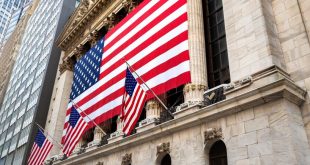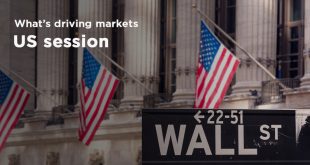The US economy in June 2025 presents a complex picture: growth persists but slows, inflation surges due to tariffs, and job gains offer resilience. These dynamics, captured by the S&P Global US PMI Composite Output Index at 52.8, suggest an economy expanding at a 1.5% annualized rate, down from late 2024 peaks. This slowdown, paired with rising prices and policy uncertainty, shapes a cautious outlook for the Federal Reserve’s next moves. What does this mean for the path ahead?
Growth Cools Amid Export Weakness
Economic activity continues its 29-month expansion, but momentum is waning. June’s PMI reading, down from May’s 53.0, reflects a dip in new orders and a notable decline in exports, particularly in services, which saw the largest quarterly contraction since late 2022. Manufacturing, however, shows signs of revival, with output rising for the first time since February, driven by robust domestic demand. This shift toward balanced growth between sectors offers some stability, but the reliance on domestic markets masks vulnerabilities in global trade.
Inventory buildup further complicates the picture. Manufacturers ramped up input purchases at the fastest pace in over three years, leading to significant stock accumulation. While this buffers against supply chain disruptions, often linked to tariff concerns, it risks unwinding if demand softens. The economy’s growth, therefore, hinges on sustaining domestic momentum while navigating external headwinds.
Inflation Spikes as Tariffs Bite
Price pressures intensified sharply in June, with manufacturing input and selling prices hitting levels unseen since July 2022. Tariffs were cited as the primary driver, with nearly two-thirds of manufacturers attributing higher costs to these trade barriers. Services also faced rising costs, though at a slower pace than in May, driven by tariffs alongside wages, fuel, and financing expenses. The PMI prices charged index points to consumer price inflation potentially reaching 4% in coming months, a worrying signal for policymakers.
This tariff-driven inflation challenges the Federal Reserve’s strategy. With Jerome Powell leading the Federal Open Market Committee, the Fed has adopted a wait-and-see stance, holding interest rates at 4.25%–4.50% after 100 basis points of cuts in late 2024. The resurgence of inflationary pressures suggests rate cuts may remain on hold, as the Fed assesses whether this spike is transitory or a longer-term threat.
Labor Market Strengthens Despite Uncertainty
Amid these challenges, the labor market provides a bright spot. Companies hired at the fastest pace in over a year, spurred by rising workloads and backlogs, which grew at the steepest rate in three years. Manufacturing led with a 12-month high in job creation, while services hit a five-month peak. This resilience bolsters economic stability, but it also fuels wage pressures, adding to inflation concerns.
Business confidence, however, dipped in June, particularly in services, where uncertainty over government policies, including potential spending cuts, weighs heavily. Manufacturers, by contrast, showed slight optimism, possibly due to anticipated benefits from trade protectionism. This divergence underscores the uneven impact of policy shifts under President Trump’s administration.
The US economy stands at a crossroads. Persistent growth and strong hiring offer hope, but slowing momentum, tariff-driven inflation, and policy uncertainty cloud the horizon. The Federal Reserve’s cautious approach seems prudent, likely maintaining steady rates through 2025, with a potential cut eyed for December. Growth may hover below 1.5% next year, the weakest since 2009, barring unforeseen shocks. Navigating this landscape demands agility—businesses seek one way or another in order to adapt to higher costs, while policymakers balance inflation control with economic support. The coming months will test this delicate equilibrium.

 Noor Trends News, Technical Analysis, Educational Tools and Recommendations
Noor Trends News, Technical Analysis, Educational Tools and Recommendations




